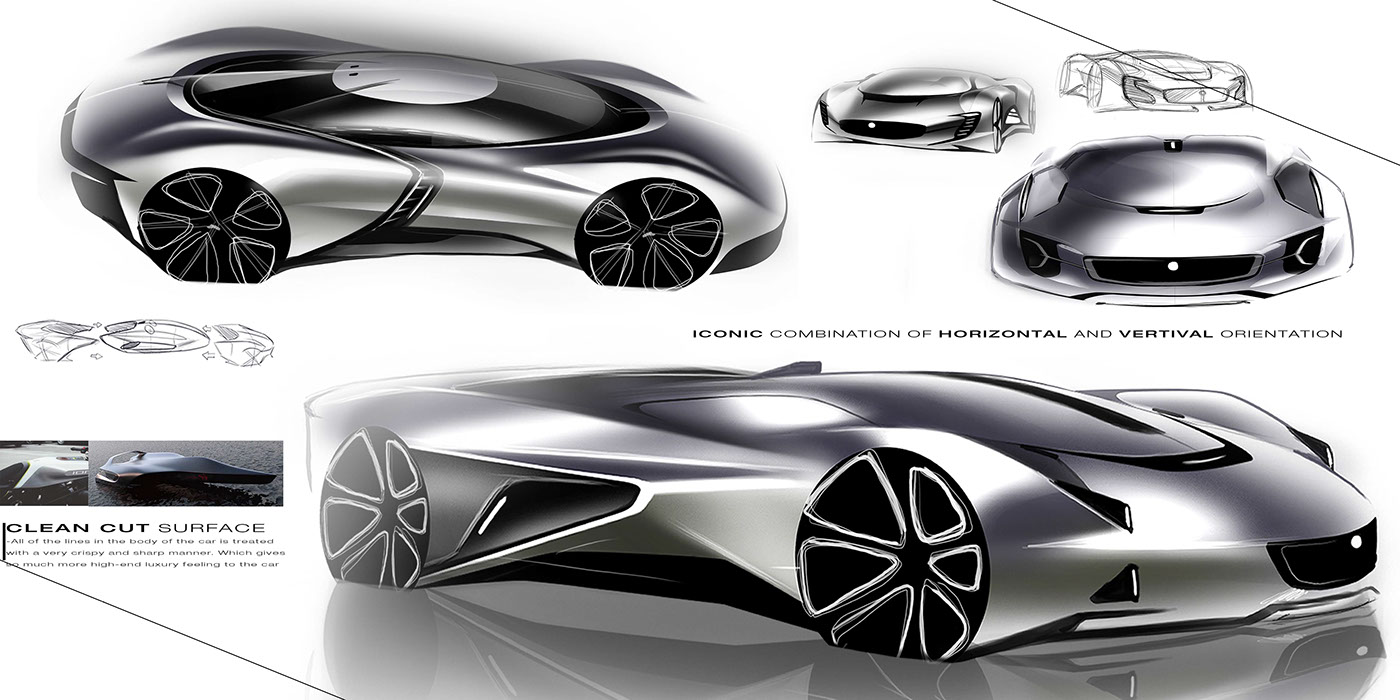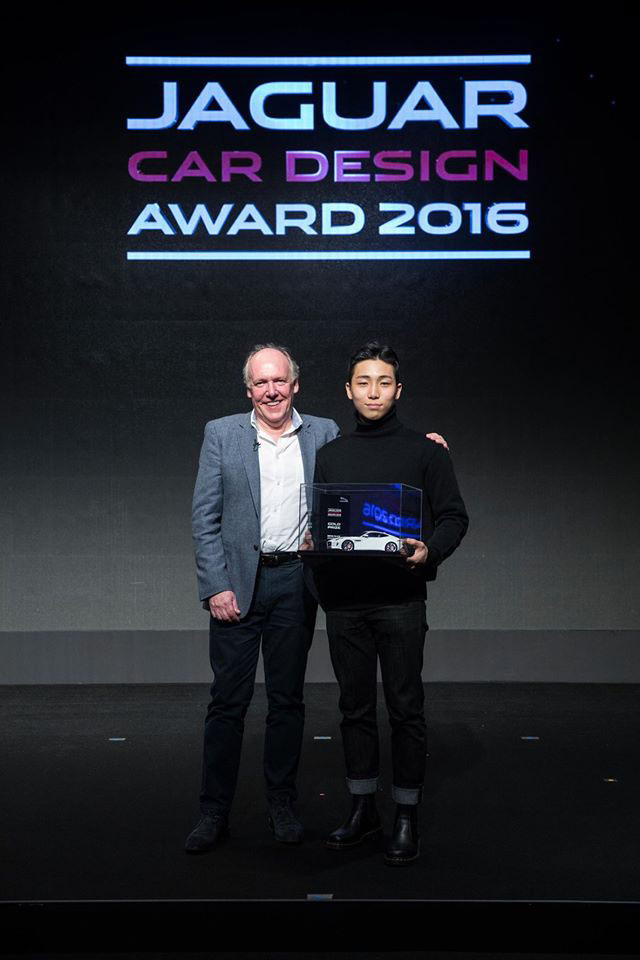We are currently living in an automotive world undergoing a whirlwind of change. Autonomous driving is no longer something out of science fiction, and we all know that we are not going to have to drive in near future. In such a future, would “joy from the pure driving experience” vanish? What will the sports car ownership be like in the future automotive world? How will Jaguar, the world’s leading luxury sports-car brand respond? The C-x100 concept is my answer to these questions.
As it implies from its title, the C-X100 is a flagship mid-engine layout sports car concept designed for the year 2035 to celebrate Jaguar’s hundred year long legacy as an automotive leader. It carries on the heritage and DNA of the brand’s most advanced vehicles of its eras, from the XJ-13, Jaguar’s first ever mid-engine prototype in 1966, through to the XJ-220, the fastest production car of its time in 1992, and most recently the C-X75 which was developed to celebrate 75 years of brand history in 2010.
This concept would play two different roles for two different groups: the purist, and the digital native. The first group consists mostly of buyers in their 40’s and 50’s, who have grown up with an admiration for Jaguar as a brand, and both remember and appreciate the joy a pure driving experience can give. Now that they finally have the money to afford a Jaguar, The C-X100 concept will reaffirm their love of the brand, for all its heritage and purity of experience. For the younger “digital natives,” who are used to autonomous driving and car sharing service, the only way they really get to experience Jaguar is going to be in virtual reality (gaming and entertainment environment) because they cannot yet afford a jaguar, and they view driving as a special activity or entertainment rather than a part of normal life. For them, the C-X100 will act as a showpiece of innovation, something that convinces a younger generation of the value of driving, through technical innovation, keeping the brand admirable as it always has been.
As I mentioned previously, the C-X100 carries DNA from three of Jaguars mid-engine sports cars from three different eras: the 1966 XJ-13, the 1992 XJ-220, and the 2010 C-X75. Its proportion and pure silhouette are a directly inspired by these three vehicles to reinforce the brand’s heritage in the audience’s eyes, but underneath that clean silhouette are technical innovations in the packaging of the vehicle, which led me to create more of experimental architecture. By using electric in-wheel hub motors, I was able to use the space where an engine would traditionally be, for an air compress generator to generate electricity at high speeds. This frees up a pathway for air to flow inside and outside of the body, and also makes the battery pack smaller and lighter, leading to a much more lightweight appearance, visually. And, by using smart glass that serves as a link to both real world and virtual world for the driver, I was able to further simplify the surfacing. Because of the sports car’s low and wide proportions, I focused on visual interest that would be revealed when viewing the vehicle from above by removing as much element s as possible on the top surface. And sophisticated elements are placed underneath with muted gold chrome garnish which shows hint to the sophistication and technical innovation underneath. This concept is both a celebration of the Jaguar’s heritage and a showcase of its technical ability and innovation.




















